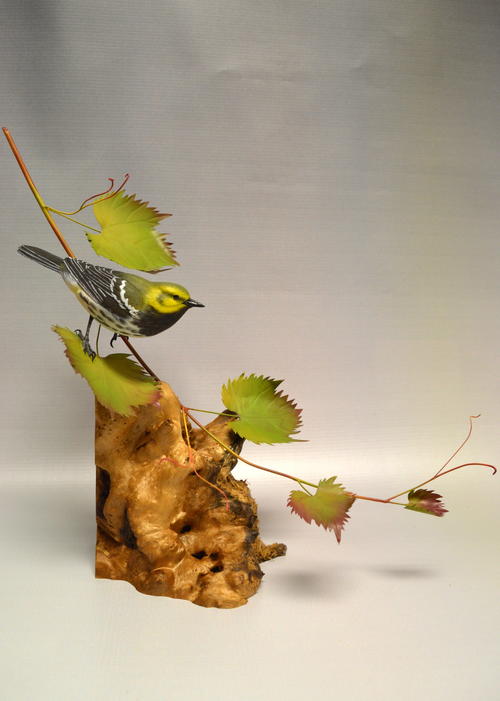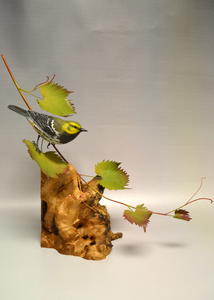Heard It Through the Grapevine
This habitat is suitable for many bird species.

Al Jordan lives in Rochester, New York, where he is a master falconer. He was the North American shorebird champion in 2008 and the IWCA Shorebird Champion in 2010. Al is also an instructor and judge and the author of WILDFOWL CARVING MAGAZINE’S Half-Size Osprey Workbench Project. Learn about Al’s classes and one-on-one instruction at (585) 227-2235, www.ajordanbirds.com, or by email at ajordanbirds@yahoo.com.
I try to teach my students that it is best to design and compose a piece before starting it. Too many people carve a bird first, ask themselves later how they should mount it, and end up putting the bird on a dead stick or a broken branch and declaring it done. I believe this way of proceeding is a bit backwards and seldom ends in a well-composed, artistic sculpture.
All this mumbo jumbo aside, I have found that grapevines, both wild and cultivated, provide a very artistic presentation for a carving. The grapevine is adaptable to many situations. The vines can grow up or down, and they can have seasonal variations in color, ranging from bright yellow for spring new growth, to rusty red and pale brown in fall. In additions, the vines themselves can have no fruit at all, new-growth fruit, or ripe berries. All these variances can lead to a beautiful piece of art as you consider colors, shapes, and lines.
I am not going to teach design and composition in this article, but I will explain my process for creating a beautiful, realistic grapevine. Once you learn how to create one, you will see how it gives you freedom to make all sorts of design and compositional choices of your own.
This article is from the Fall 2015 issue of Wildfowl Carving Magazine.
Read NextDemonstration: Carver's Block
YOUR RECENTLY VIEWED ARTICLES
Free tutorials, expert tips, exclusive partner offers, and more straight to your inbox!
Joe Donahue
Jun 03, 2021
Habitat is great. What I find most difficult is then attaching the carving to the stem/branch/vine. How bout an article on doing that? I find feet and legs the most difficult aspect of any carving especially smaller birds.
birdarts 8612538
Sep 08, 2016
Great article I will get lots of use out of it . I also think it will work great for any other type of branches like oaks ,maples etc. . It applies to all .
Report Inappropriate Comment
Are you sure you would like to report this comment? It will be flagged for our moderators to take action.
Thank you for taking the time to improve the content on our site.



